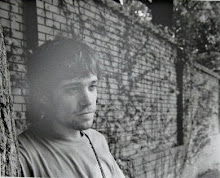How can i think about time without considering Einstein's theory of relativity? I can't. To put it simply, time moves slower on objects in motion. There is no reverse in direction, yet if one could possibly move fast enough time itself could possibly stand still or even reverse.
Keeping in mind that time itself is an abstract idea (which is probably why i don't get along well with it), how do I show one hour of time through a video piece not equal to one hour? I'll just list three ideas so that i will be prepared for class.
1. Show video from the standpoint of a moving object. The video would end up being shorter than an hour because time is acting slower on the camera and still showing about an hour of motion outside the vehicle or object.
2. Film a moving object from a stationary point. This could turn out badly for the video would be longer than an hour and perhaps painful to watch. The object would take longer to reach an hour.
3. This final idea is more of a considerable approach. I could film a time lapse video of one hour of a candle melting. The only difference from the generic time lapse that our teacher warned us about is that it would move in reverse. Still not sure how clever this idea seems, but hopefully i can come up with some more by class tomorrow.
Wednesday, January 28, 2009
Subscribe to:
Post Comments (Atom)


Reversing a time lapse isn't very clever. Reversing, or doing the opposite, in most cases, isn't very clever because it's usually the first clever thing we think to do when think of doing clever things.
ReplyDeleteMaking films specifically dealing with Einstein's theory of relativity is a good starting point, though, and I think it would be interesting to see films done in a straightforward, scientific manner. What if you made a film that combined the different sort of perception that relativity dictates - for example: filming the same scene from stationary perspectives: in front of the moving subject, above the moving subject, behind the moving subject, from the side so that the moving subject passes in front of the camera horizontally, etc., and also from moving perspectives, varying from in or on the moving object, to passing by the moving object from different directions.
You seem to be approaching this from a very technical standpoint. I think the first one would be the most interesting (in terms of viewing), but perhaps you could expand this idea a bit more.
ReplyDelete